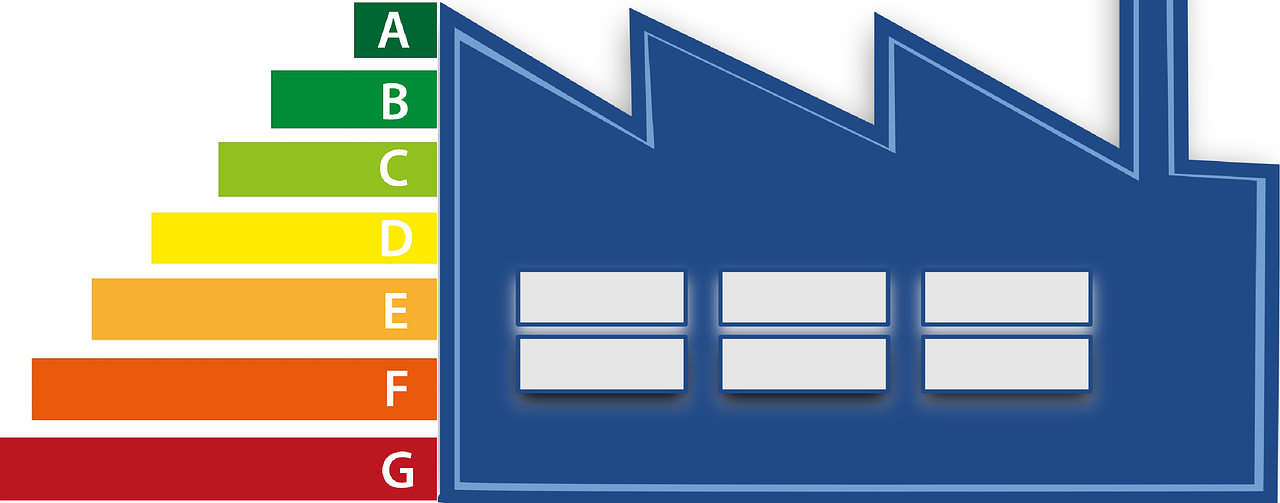In a world where market dynamics rapidly evolve and climate consciousness shapes consumer choices, crafting a sustainable business model has become an essential strategy for long-term growth. Businesses today face the challenge of meeting financial objectives while minimizing environmental impact and fostering social well-being. This dual emphasis on profitability and responsibility forms the backbone of resilience in 2025’s complex economy. Companies such as Patagonia, IKEA, and Tesla exemplify the power of embedding sustainability into their core operations, turning ethical considerations into competitive advantages. As entrepreneurs ponder their future strategies, the need to align business goals with ecological stewardship and innovation becomes paramount.
Modern consumers demand transparency, accountability, and purpose-driven value. Firms like Unilever and Danone have transformed their supply chains and product portfolios to address sustainability challenges, demonstrating that green initiatives can elevate brand loyalty and market share. Additionally, advances in technology and robust stakeholder engagement offer unparalleled opportunities to innovate responsibly and measure impact effectively. Building a sustainable business model is no longer optional; it’s a strategic imperative that drives operational efficiency, reduces risks, and cultivates long-term customer relationships.
This article explores practical frameworks, technology integration, market strategies, and governance principles critical for companies aiming to thrive while championing sustainability. By dissecting the journeys of established leaders and revealing actionable steps, we lay out a comprehensive roadmap to embed sustainability deeply into business DNA—ensuring growth that is both profitable and planet-friendly.
Integrating Environmental Responsibility into Sustainable Business Models
To launch a sustainable business model, enterprises must embed environmental responsibility into every facet of their operations. This comprehensive commitment goes beyond surface-level “green” initiatives and requires a systemic approach aligned with the company’s mission and long-term goals. Environmental stewardship is not only about reducing carbon footprints but also about innovating product designs, optimizing resource use, and fostering circular economy principles.
Companies like Interface, the global carpet tile manufacturer, illustrate how operational overhauls can lead to both eco-friendly outcomes and financial gains. They have adopted closed-loop recycling systems and energy-efficient manufacturing processes, significantly lowering waste and emissions while maintaining industry leadership. Similarly, IKEA has integrated sustainable sourcing policies, opting for renewable materials like FSC-certified wood and investing in renewable energy projects to power their stores and factories.
In 2025, several key strategies define environmental responsibility within a sustainable business model:
- Energy Optimization: Deploying renewable energy solutions such as solar, wind, or biomass reduces dependence on fossil fuels and lowers long-term costs. Tesla’s move to manufacture solar panels and battery storage systems exemplifies how vertical integration of clean energy can complement product lines and business sustainability.
- Waste Reduction and Circularity: Designing products and packaging that can be reused or recycled prevents waste accumulation. Seventh Generation, a pioneer in eco-friendly household products, emphasizes biodegradable packaging and plant-based ingredients, minimizing environmental impact.
- Responsible Sourcing: Sustainable procurement from ethical suppliers who respect fair labor standards and biodiversity contributions minimizes social risks and enhances supply chain transparency.
- Carbon Footprint Monitoring: Utilizing IoT and AI tools to track emissions allows companies to identify inefficiencies and set impactful reduction targets. Microsoft, for instance, has implemented AI-driven emission analytics to optimize their data center operations.
These elements work synergistically to create value that appeals to both eco-conscious consumers and investors increasingly focused on Environmental, Social, and Governance (ESG) criteria. Ensuring environmental responsibility is foundational to future-proofing any business, especially as regulatory frameworks tighten globally. The next section explores how to broaden impact by aligning sustainability with social responsibility and economic viability, completing the trio of pillars necessary for sustainable business success.

Balancing Economic Viability with Social Responsibility for Robust Growth
Long-term growth hinges equally on a company’s ability to generate profits and serve social needs ethically. Integrating social responsibility into business models ensures a sustainable impact that strengthens brand reputation while fostering positive community relationships. This approach entails more than philanthropy; it involves redesigning business operations to respect workers’ rights, promote diversity, and support local development.
Danone provides a compelling example by committing to inclusive business practices globally, sustaining farmer livelihoods through direct partnerships and innovative agricultural techniques. Such collaboration not only secures supply chains but also boosts socio-economic outcomes in vulnerable communities. Eileen Fisher, a fashion brand known for ethical manufacturing and circular fashion initiatives, has demonstrated how transparency around labor practices cultivates customer trust and differentiates the brand in a crowded marketplace.
To strike a balance between economic and social goals, businesses can focus on these key strategies:
- Inclusive Hiring and Workforce Development: Encouraging diverse and equitable workplaces attracts talent and enhances innovation. Companies like Google have implemented comprehensive diversity programs and invest in continuous employee learning.
- Community Engagement: Supporting local economies through fair trade, community projects, and stakeholder dialogues builds goodwill and strengthens the company’s social license to operate.
- Fair Trade and Ethical Procurement: Selecting suppliers that adhere to fair labor conditions and environmental ethics reduces reputational risks and aligns sourcing with company values.
- Product Accessibility and Affordability: Offering products and services that are accessible to economically diverse demographics broadens market reach and sustains customer loyalty.
By harmonizing profit and purpose, businesses can scale responsibly and sustain their operations long term. As global markets become increasingly sensitive to social and environmental risk factors, this integration leads to competitive advantages and reduces vulnerabilities. Further insights on sustainable leadership can be gleaned from resources like leadership lessons from successful CEOs, which emphasize empathy and accountability in guiding future-ready organizations.
Innovating Through Technology to Build Sustainable and Scalable Business Models
Innovation fuels the transformation of traditional business models into sustainable ones, enabling companies to meet evolving consumer expectations while optimizing resource use. In 2025, leveraging technological advancements remains a vital strategy for embedding sustainability at scale, unlocking new revenue streams, and achieving operational excellence.
Automation, AI, and data analytics empower companies to reduce waste, forecast demand accurately, and design eco-friendly products efficiently. For example, Microsoft’s AI initiatives optimize energy consumption across global data centers, substantially shrinking carbon footprints. Tesla’s innovations extend beyond electric vehicles to energy storage solutions, positioning the company as a leader in clean tech ecosystems.
Key technological approaches redefining sustainable business models include:
- Smart Manufacturing: 3D printing, AI-driven predictive maintenance, and IoT sensors streamline production lines and reduce resource intensity.
- Renewable Energy Integration: Combining production with onsite renewable energy enhances energy independence and reduces costs.
- Data-Driven Decision Making: Utilizing advanced analytics to monitor sustainability KPIs and drive continuous improvement.
- Consumer Engagement Platforms: Digital tools that promote transparency and allow consumers to track product sustainability metrics fostering brand loyalty.
Table 1 below summarizes how technology enables key sustainability dimensions across sectors:
| Technology | Application | Impact on Sustainability | Example Company |
|---|---|---|---|
| Artificial Intelligence | Energy optimization in data centers | Reduced emissions and cost savings | Microsoft |
| 3D Printing | On-demand, waste-minimizing manufacturing | Lower material waste and faster prototyping | Interface |
| Renewable Energy Storage | Energy independence for production sites | Decreased fossil fuel reliance | Tesla |
| Digital Transparency Platforms | Consumer product lifecycle tracking | Enhanced brand trust and loyalty | Seventh Generation |
Adoption of such technologies not only drives efficiency but also opens pathways to new customer segments and revenue sources. For more information on avoiding pitfalls during digital transformation and innovation, explore financial mistakes business owners must avoid.

Expanding Market Reach and Diversifying Revenue to Sustain Long-term Growth
Scaling sustainably requires businesses to effectively broaden their market reach and diversify revenue sources. This dual approach mitigates risks associated with market saturation, regulatory shifts, or changing consumer preferences. Long-term resilience rests on creating adaptable business models that engage new demographics while maintaining environmental and social accountability.
Patagonia demonstrates successful market expansion by appealing to environmentally conscious consumers worldwide, enhancing its product lines with recycled materials and circular economy initiatives. Unilever’s strategy to diversify encompasses launching innovative product variants in emerging markets that focus on health and wellness, increasing accessibility and inclusiveness.
Strategies to grow market presence responsibly include:
- Localization: Tailoring products and services to regional preferences while respecting local ecosystems.
- Multi-Channel Engagement: Providing seamless access through online platforms, mobile applications, and physical stores.
- Flexible Payment Systems: Supporting diverse payment methods to reduce barriers for global customers, as seen in the iGaming industry’s adaptive platforms that attract a varied audience through mobile-friendly interfaces.
- Subscription and Service Models: Offering subscription boxes or services that encourage reuse and reduce waste.
Table 2 highlights the correlation between market diversification strategies and sustainable growth outcomes:
| Strategy | Benefit | Example Sector | Company Example |
|---|---|---|---|
| Localization | Enhanced cultural relevance and customer loyalty | Retail, Food & Beverage | Danone |
| Multi-Channel Engagement | Expanded audience reach and convenience | Consumer Goods, iGaming | Unilever, iGaming platforms |
| Flexible Payment Systems | Increased accessibility and sales conversion | Online Services | iGaming platforms |
| Subscription Models | Steady revenue and reduced waste | Household Products | Seventh Generation |
By embracing these multifaceted approaches, companies not only expand their economic footprint but also strengthen their position as leaders in sustainable development. For entrepreneurs aspiring to build resilience amid uncertainty, tools and frameworks are available in resilient business strategies that balance growth with durability.

Embedding Governance and Risk Management to Future-Proof Sustainable Businesses
Robust governance and comprehensive risk management underpin sustainable business models, ensuring accountability and adaptability amid shifting landscapes. Companies must develop policies to manage financial, operational, reputational, and regulatory risks while adhering to ESG principles. This fortifies investor confidence and reduces vulnerability to crises.
Financial institutions such as banks have revised their governance frameworks to incorporate ESG benchmarks, guiding investments aligned with sustainability objectives. Similarly, companies like Google have enhanced transparency by publishing detailed sustainability reports and adopting strict compliance measures to meet evolving regulations.
Key governance and risk management practices include:
- Establishing Clear ESG Policies: Formalizing sustainability goals across corporate operations and ensuring leadership accountability.
- Regular Risk Assessments: Identifying potential financial and environmental risks, from climate impact to supply chain disruptions.
- Stakeholder Engagement: Incorporating feedback from customers, employees, investors, and communities to guide strategic decisions.
- Transparent Reporting: Publishing progress and challenges openly to build trust and comply with regulatory demands.
Strong governance frameworks empower businesses to anticipate challenges and seize sustainability-driven opportunities. These efforts translate into resilient organizations capable of maintaining growth and positive impact over decades. For an in-depth exploration of leadership qualities necessary for success in this evolving landscape, see emotional intelligence in leadership.
What are the primary challenges of building a sustainable business model, and how can they be overcome?
Building a sustainable business model involves navigating challenges such as initial higher costs, changing consumer expectations, and complex supply chains. Overcoming these requires a clear mission, sustained stakeholder engagement, and continuous innovation. Embracing transparency and leveraging technology helps mitigate risks and optimize operations for sustainability.
How do companies measure the impact of their sustainability initiatives effectively?
Companies measure sustainability impact using key performance indicators (KPIs) like carbon emissions reductions, waste diversion rates, and social impact metrics. Tools like AI-driven analytics provide real-time data enabling adjustments and increased transparency to stakeholders, enhancing accountability and strategic focus.
Why is stakeholder engagement crucial in sustainable business growth?
Stakeholder engagement fosters collaboration, trust, and feedback loops that align projects with community and market needs. It ensures adaptive management and builds a social license to operate, both critical for long-term success in dynamic environments.
What role does technology play in advancing sustainable business models?
Technology drives efficiency and innovation while enabling precise impact measurement. Automation, AI, and IoT reduce waste, optimize resources, and increase transparency. This technological integration is vital for scaling sustainable practices and staying competitive.
How can businesses balance profitability with environmental and social responsibility?
Balancing profit with responsibility involves embedding sustainability into core strategies rather than treating it as an add-on. Companies can identify initiatives that reduce costs, tap into new markets, and build brand loyalty through ethical practices, thereby ensuring economic viability alongside positive impact.


